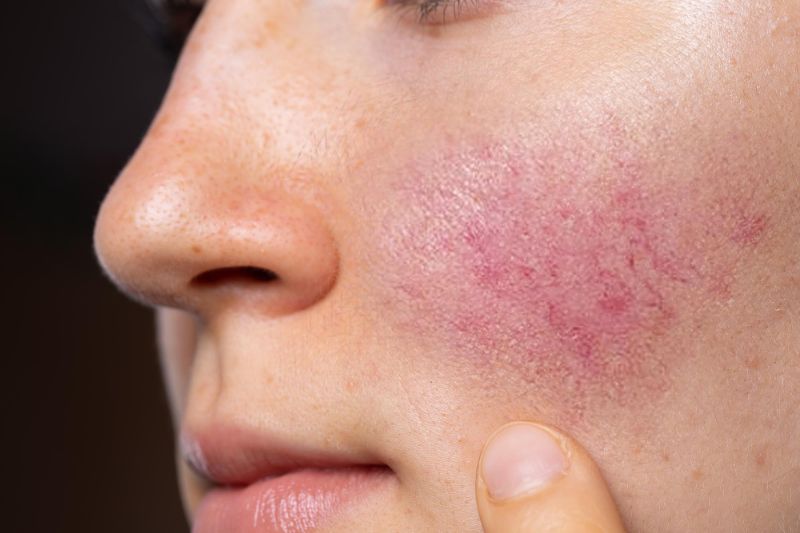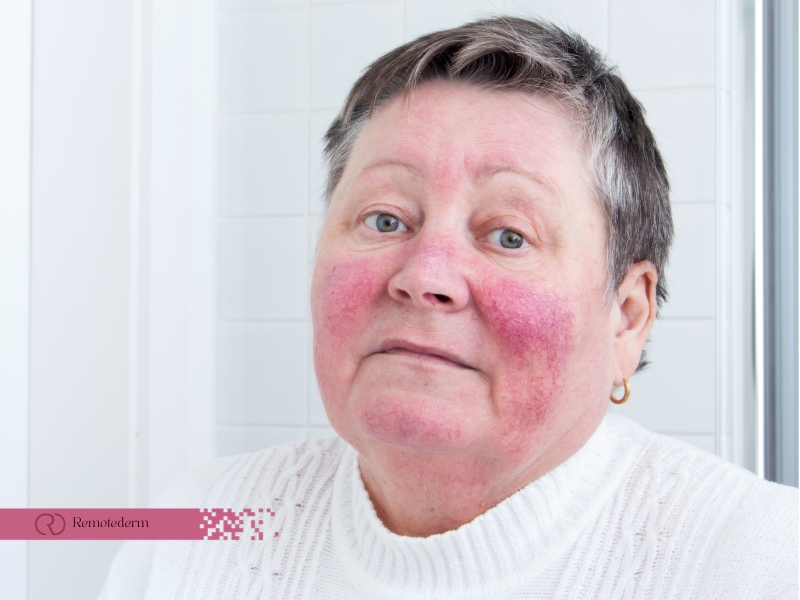Winter Rosacea – it’s a phrase that sends shivers down the spine of anyone who suffers from this skin condition. As the cold weather sets in, so do the challenges for those with rosacea. The redness, the flushing, and the discomfort can become even more pronounced during the winter months. But fear not, because, in this ultimate survival guide, we will equip you with the knowledge and tools to conquer winter rosacea and enjoy the season to the fullest.
Understanding Winter Rosacea
Before diving into the tips and tricks to combat winter rosacea, let’s first understand what it is and why it tends to worsen in cold weather. Rosacea is a chronic skin condition characterized by redness, visible blood vessels, and often, small, pus-filled bumps on the face. While the exact cause of rosacea is still a subject of research, it is known to be influenced by various factors, including genetics, environmental triggers, and an overactive immune response.
The Impact of Cold Weather on Rosacea
As temperatures drop and the air becomes drier during winter, individuals with rosacea may find their symptoms exacerbated. The cold weather can lead to skin dehydration, which can trigger rosacea flare-ups. Additionally, the sudden changes in temperature, from the cold outdoors to the warm indoors, can cause blood vessels in the face to expand and contract rapidly, leading to increased redness and flushing.
Winter Tips for Rosacea Patients
Here are some comprehensive tips to help rosacea patients maintain their skin’s health during the winter season, ensuring they can confidently embrace the beauty of the season without worrying about flare-ups or discomfort. With the right rosacea winter skin care and lifestyle adjustments, you can enjoy the winter wonderland:
- Hydration Is Key
To combat the skin-drying effects of winter, it’s crucial to keep your skin well-hydrated. Use a gentle, fragrance-free moisturizer regularly to maintain skin moisture. Opt for products containing ceramides or hyaluronic acid, as these can help strengthen the skin’s natural barrier.

- Gentle Cleansing
Avoid harsh cleansers and opt for a gentle, non-abrasive cleanser to wash your face. Harsh cleansers can strip away natural oils, further aggravating rosacea symptoms. Instead of rubbing your face, pat it dry with a soft towel.
- Sun Protection
During the winter, it’s easy to assume that the sun’s rays are less harmful, but don’t underestimate the power of the winter sun. UV rays can still penetrate the clouds and cause skin damage. To safeguard your skin, it’s essential to apply a broad-spectrum sunscreen with at least SPF 30 every morning, regardless of whether it’s sunny or cloudy.
- Layer Up
Consider wrapping a cozy scarf around your neck and a ski mask to protect your face from harsh winter elements. These layers not only keep you warm but also act as a physical barrier, reducing the risk of windburn and temperature-induced rosacea flare-ups. Prioritizing proper clothing can make a significant difference in your comfort and skin health during the winter season.

- Avoid Hot Baths and Showers
While the idea of a hot bath or shower in the winter may be tempting, it’s essential for rosacea patients to resist this urge. Hot water can exacerbate rosacea symptoms by dilating blood vessels and increasing skin sensitivity. Instead, opt for lukewarm water when bathing. This temperature is gentler on your skin, reducing the likelihood of flushing and irritation.
- Choose Rosacea-Friendly Cosmetics
Prioritize those labeled as “non-comedogenic” and “hypoallergenic.” These products are specifically formulated to be less likely to irritate sensitive skin. Look for gentle, fragrance-free options that won’t clog your pores or trigger rosacea flare-ups.
- Diet Matters
Your diet can play a significant role in managing rosacea during the winter season. Be mindful of your food choices, as certain items can trigger rosacea flare-ups. Spicy foods, alcohol, and hot beverages are frequent offenders. Instead, opt for soothing, anti-inflammatory foods like oatmeal, yogurt, and green tea.
- Stay Stress-Free
Stress is a well-known trigger for rosacea, and the winter season can often bring added stress with holiday preparations and weather-related concerns. To keep your symptoms in check, engage in stress-reduction techniques such as yoga, meditation, or deep breathing exercises. These practices can help you maintain emotional well-being, which, in turn, can lead to fewer rosacea flare-ups and a more enjoyable winter season overall.
Dealing with Winter Rosacea in Canada
Dealing with winter rosacea in Canada can be particularly challenging due to the harsh Canadian winters. The frigid temperatures and biting winds can make rosacea symptoms even more uncomfortable. To tackle this, follow the tips mentioned above diligently and consider investing in a humidifier to add moisture to the dry indoor air. Also, don’t forget to keep your skin covered when venturing outdoors, and be sure to use a high-quality, fragrance-free sunscreen.

Online Rosacea Treatment
In the age of technology, you don’t have to face winter rosacea alone. There are numerous online rosacea treatment resources and telehealth options available for rosacea sufferers. From virtual dermatologist consultations to online support communities, you can find valuable information and emotional support from the comfort of your home.
Final Thoughts
In conclusion, managing rosacea during the winter months requires a proactive approach and a commitment to self-care. Understanding the unique challenges that cold weather poses to your skin and taking steps to mitigate them can make a world of difference in your comfort and confidence. By focusing on hydration, gentle skincare routines, sun protection, appropriate clothing, dietary choices, and stress management, you can keep rosacea flare-ups at bay and enjoy the winter season without the burden of constant worry.
For those enduring the harsh Canadian winters, the battle against winter rosacea may be more challenging, but it’s not insurmountable. By diligently following the recommended strategies and seeking support from online resources and telehealth options, you can stay connected with the rosacea community and access the guidance you need from the comfort of your home. Remember that you’re not alone in your journey, and with the right knowledge and care, you can navigate winter rosacea with resilience and grace, ultimately embracing the season’s unique beauty and serenity.
FAQs
- Should I avoid winter sports with rosacea?
Not necessarily, but remember to protect your skin with appropriate clothing and sunscreen when participating in outdoor activities.
- Can central heating worsen rosacea in winter?
Yes, central heating can dry the indoor air, so consider using a humidifier to counteract this effect.
- Is there a cure for rosacea?
There is no cure, but various treatments and strategies can help manage and alleviate symptoms.
- What is the best way to conceal rosacea during winter?
Use a green-tinted primer to neutralize redness before applying makeup, and choose gentle, hypoallergenic cosmetics.
